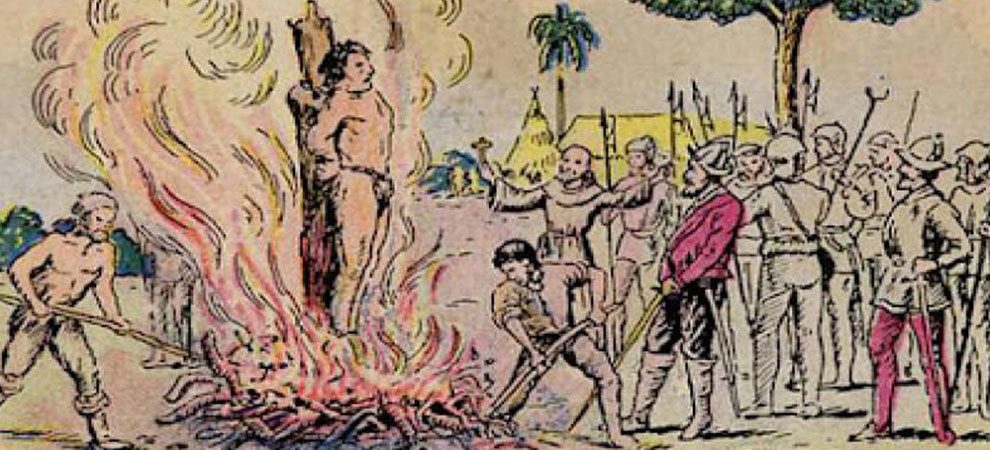Depredations of the Spanish colonizers, committed against the native population of the Island La Española, caused Cacique Hatuey to flee with a few hundred of his own to the neighboring Island of Cuba. He settled in a village near the Toa river in Baracoa and he warned the population of the approaching danger and tried to organize them against the invaders.
Forced to enter Sierra Maestra mountains after months of resistance, his persecutors knew through torture applied to several natives that
Hatuey was in the region of Manzanillo , in the current province of Granma.
Once captured he was condemned to die at the stake, as a heretic and a rebel. The currently accepted version is that the burning of Hatuey was carried out in some area of the current province of Granma, specifically in the town of Yara, where a monument with the figure of the cacique, who initially was thought to had been burned in Baracoa.
It is said that before being burned, one of the Spanish religious who accompanied the troops asked him if he wanted to accept Jesus and go to heaven. Fray Bartolomé de las Casas narrated in one of his writings that the Taíno leader asked if the Spaniards were going to heaven. In the face of an affirmative answer, he said that then he did not want to go there so he would not have to see such cruel people again.
Spanish conqueror Diego Velázquez intended to make the indigenous resistance disappear. But the truth is that the episode went down in history as another example of the despotism and tragedy that accompanied the life of the first inhabitants of the Americas, after the arrival of the colonizers.
Today a legend persists around the event, the oldest in Cuba, is called Luz de Yara. They say that since cacique Hatuey was burned alive at the stake, that light has been seen by many people.
There are residents of that area of the Granma territory, which, since time out of mind, has been seen on some occasions, a light at dusk, just before the sun is hidden, a light whose size varies and appear on the path of travelers. The light, according to the legend, is innocuous and they have it as a symbol of the denial of the brave aborigine Hatuey, to leave the place where he was burned alive by the conquerors.
The light appeared and, as it was told, one who was staring at it did not recognize where he was, that is, one of its characteristics was that of losing people but without causing them harm. It is said that if the light is approaching, one should put on his clothes backwards so as not to lose control of his actions and try to follow the course.
To visit the monument devoted to Indio Hatuey and learn more about this interesting story you can stay at our rental houses located in Bayamo and thus be closer to a legend, the man symbol of the rebellion of the Cuban people.





























Comments
Add a comment